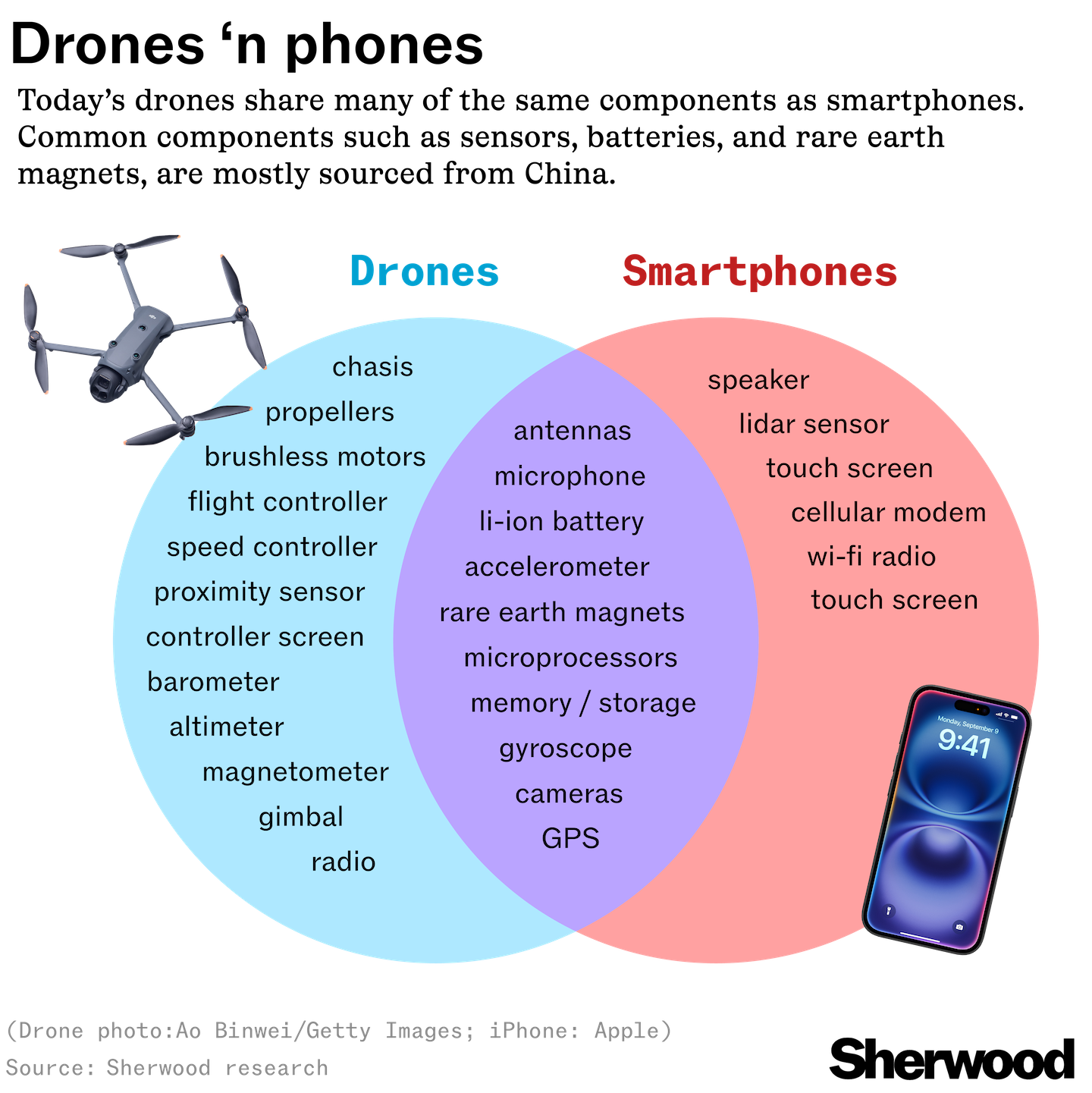Quick, how many B's are there in the word "blueberry"? Congrats to you if you correctly said two, something OpenAI's new GPT-5 model got wrong, repeatedly. It also not only bungled listing how many US states have the letter R in their name, but made a frankly hilarious map of those… states. Before we dive into our Future of Tech special edition, let's talk about last week's market, which ended on a strong note. Stocks rebounded on Friday, with all three major indexes closing the week in the green after a slew of second-quarter earnings results. The S&P 500 rose 0.78%, the Nasdaq 100 jumped 0.95% to close at a new record, and the Russell 2000 climbed 0.17%.
🧠 Quiz time… |
- Last quarter, Amazon, Google, Meta, and Microsoft spent $88 billion (the equivalent of the market cap of Starbucks) on purchases of property and equipment, much of which went toward AI projects like data centers. But which company spent the most?
Check your answer.
|
|
|
While much of the oxygen in Big Tech rooms is being used to talk about the future of AI, another important tech has come to the forefront of a literal arms race: drones. The stakes could not be higher. The Russia-Ukraine war has elevated the humble quadcopter-style drone to a crucial weapon for fighting modern wars. Strategies for defeating swarms of Chinese drones are the subject of war games run by military commanders in the US and Taiwan. Recent tests of how American forces could both use low-cost portable drones in warfare and defend against them did not bode well. All of this is why the Trump administration wants to "unleash American drone dominance," but that might be harder than making iPhones in America. If you look at a drone sitting next to an iPhone, they may seem like they don't have much in common. But under the hood, the two devices are close relatives with common technological DNA. Our Venn diagram shows how many components the two items share. No matter how many carbon-fiber drone frames and propeller blades you make in the US, an American drone will still need to get many of its key components from abroad. China dominates the supply chain for most drone components, making local sourcing extremely difficult. That said, several US drone makers are stepping up to challenge Chinese industry leader DJI, which has commanded the space for a decade: |
- Privately held California-based Skydio exited the consumer drone market in 2023 to focus on the enterprise, government, and military market. Skydio sent hundreds of its drones to help Ukrainian troops fend off Russia's invasion, but it didn't go well, as they didn't hold up in real-world battle conditions. The company was also sanctioned by China last year for selling drones to Taiwan, which affected the company's lithium-ion battery supply chain.
- Unusual Machines is a Florida-based manufacturer of crucial drone components — including brushless motors, cameras, and flight controllers — that comply with US regulations, allowing use by government agencies. The company raised $5 million in an IPO in February and is now expanding into a 17,000-square-foot drone motor factory in Orlando.
|
|
|
The race to build an American drone supply chain is part of a larger effort to cajole companies to bring manufacturing lines back to the US. Last week saw the effect of the Trump administration's pressure on one of the largest companies in the world when Apple CEO Tim Cook visited President Trump, bringing a gold and glass trophy to celebrate an additional $100 billion in Apple's US manufacturing investment. But it will take more than a shiny bauble for a company to truly compete with DJI and attain the components and skills needed for America to catch up to China's drone industry. |
|
|
What's your plan when the future doesn't ask permission? |
Markets run on signals. But the world runs on systems: fragile, overexposed, increasingly out of control. The Guild is a new kind of protection tech: born from the shadows of defense, built for a future where cybersecurity isn't enough. The Guild wasn't made in Silicon Valley. It was made for when Silicon Valley fails. Autonomous defense. AI that doesn't exploit, it protects. And machines that serve people, not platforms. It's not about avoiding risk anymore. It's about neutralizing it before it arrives. In finance, they say timing is everything. In defense, it's the only thing. Together, we won't fear tomorrow. |
The Guild is a fictional property of Activision. Trademark & copyright 2025 |
|
|
Stories we're obsessed with |
Companies like Amazon, Meta, Microsoft, and Alphabet spent not only a record of nearly $90 billion on capex last quarter but also a good amount of time in the latest earnings season lauding AI, demonstrating how they were "leading at the frontier of AI," and explaining how the tech was "unlocking greater efficiency." We gathered some of the AI-lights here. Guess which CEO mentioned AI 86 times. |
|
|
- Monday: Earnings expected from AMC and Plug Power
- Tuesday: July Consumer Price Index. Earnings expected from Cardinal Health, Cava, Circle, CoreWeave, On Holding AG, and Rigetti Computing
- Wednesday: Earnings expected from Cisco
- Thursday: July Producer Price Index. Earnings expected from John Deere, JD.com, Tapestry, and Applied Materials
- Friday: July retail sales, July industrial production. Earnings expected from Alibaba
|
|
|
Advertiser's disclosures: The Guild is a fictional property of Activision. Trademark & copyright 2025. |
|
|
Was this email forwarded to you? Don't miss out on future stories — subscribe to Snacks and get your daily dose of financial news straight to your inbox. Craving more insights in your inbox? Subscribe to Chartr and The Wrap for quality reads. |
|
|
Sherwood Media, LLC produces fresh and unique perspectives on topical financial news and is a fully owned subsidiary of Robinhood Markets, Inc., and any views expressed here do not necessarily reflect the views of any other Robinhood affiliate... See more |
|
|
|








No comments:
Post a Comment